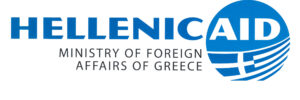This edition analyses how trade can contribute to economic diversification and empowerment, with a focus on eliminating extreme poverty, particularly through the effective participation of women and youth. It shows how aid for trade can contribute to that objective by addressing supply-side capacity and trade-related infrastructure constraints, including for micro-, small- and medium-sized enterprises notably in rural areas.
The analysis is based on the views of 133 respondents – 88 developing countries, 35 donors, 5 providers of South-South trade-related support and 5 regional organisations – who participated in the 2019 aid-for-trade monitoring and evaluation exercise. They share the view that economic diversification is a gateway for economic empowerment, but also that empowerment is essential for economic diversification particularly when it enables youth, women and micro-, small- and medium-sized enterprises to engage in international trade.
The United Nations Agenda 2030 for Sustainable Development calls for economic growth to be inclusive and sustainable. This requires paying greater attention to the social and environmental impact of economic diversification and growth. While this new environment creates challenges, targeted policies promoting economic diversification and structural transformation can create ample opportunities for inclusive and sustainable development. These policies include the supply of appropriate incentive frameworks; investments and policy reforms targeted at reducing trade costs; policies to support adjustment and the reallocation of resources; and government interventions correcting market, policy and institutional failures.
The entry into force of the WTO Trade Facilitation Agreement is a case in point. Progress is being made. Developing countries’ level of alignment to the Agreement is increasing, with notable improvements in publication of measures, automation and streamlining of procedures and engagement with the trade community. Positive impacts from these aid supported reforms have also been registered. Country reports and periodic studies show reduction in customs physical inspections, elimination of unnecessary documents, automation of manual processing steps, and consequent reduction of clearance times.
Since the start of the Aid for Trade Initiative in 2006, donors have disbursed USD 409 billion in official development assistance to help developing countries build trade capacities. In addition, USD 346 billion in low concessional loans have been disbursed. Almost another USD 100 billion in both types of flows have been committed in 2017. South-South providers contributed USD 9 billion, according to OECD estimates. Empirical studies and programme evaluations find that this support is helping developing countries improve their competitiveness, expand and diversify their trade, attract foreign direct investment, and create employment.
While economic diversification is essentially a nationally driven process, the international community can offer assistance in creating an enabling environment for the trade integration of developing countries and helping them tackle supply side constraints. To promote empowerment, aid programmes need to focus more explicitly on helping developing countries create more opportunities for women and youth. Youth employment or entrepreneurship can be promoted by addressing firm level market failures and improving the business ecosystem. Women’s empowerment should receive more attention, particularly in sectors such as transport, energy, banking and financial services, as well as mining and industry. In this context, the development of concrete guidance on how to plan, monitor and evaluate donor activities in contributing to women’s economic empowerment through aid for trade can prove useful
More information:
